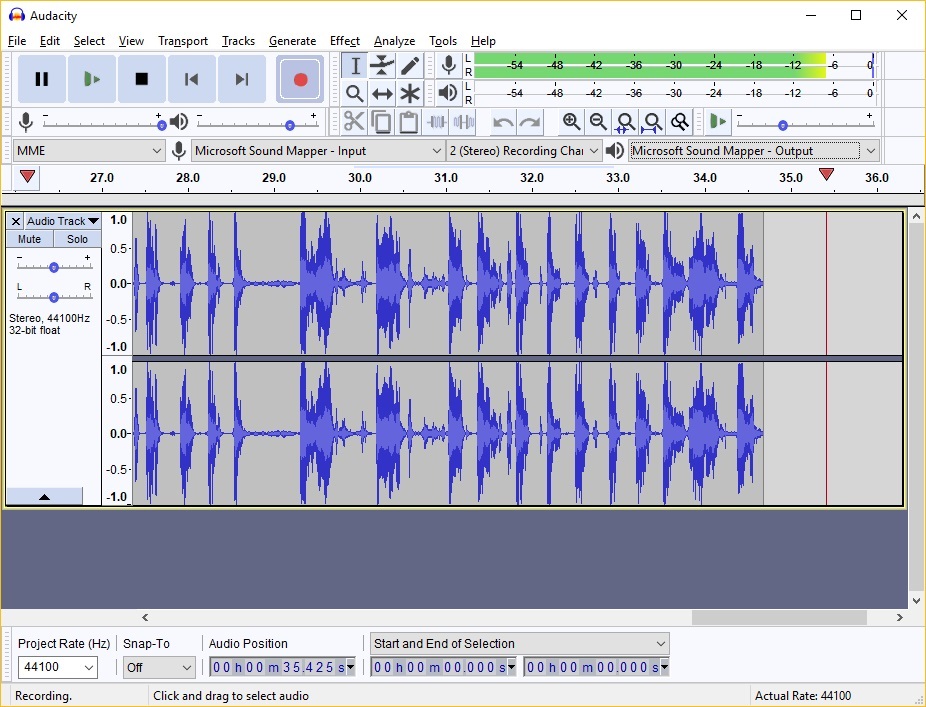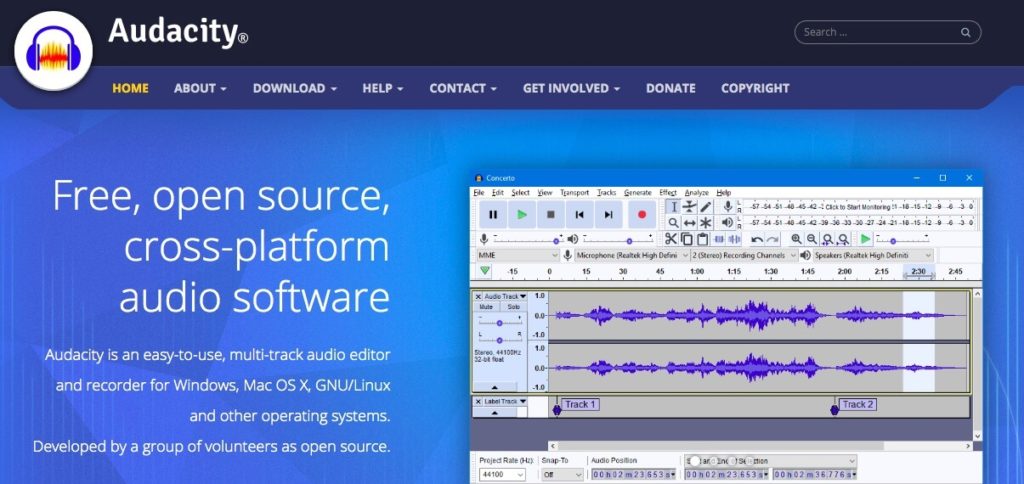

As long as it makes sense to you and doesn’t get in the way of efficient studio operations, your recording software is doing its job.

I’ve continued to keep a copy handy in order to help voice actors refine their workflows.Īlthough I prefer to use different recording software for my go-to working environment, it’s important to note that no audio software records “better” than any other – it’s always about the interface. Many choose to use it as a main working environment or may keep it as an alternative recording option should there be some calamity with their regular software. Audacity continues to be widely used by voice actors. It has been interesting to see Audacity’s development since it was acquired by MUSE last year. It has some beneficial updates including a big change: implementation of Realtime Effects on individual tracks. I’ve floated the input meter out to the right for better visibility, as well as changing the scale to the more universally used decibel (dB) system.Ī new version of the popular Audacity recording software came out recently. The new layout for Audacity version 3.2.0 (using the “dark” palette option).


 0 kommentar(er)
0 kommentar(er)
